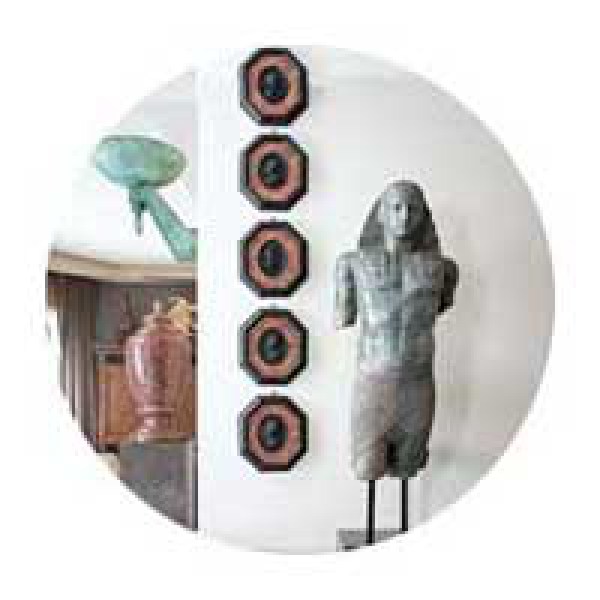Neo Classical Greek/Roman/Egyptian, Empire
Neo Classical Greek / Roman / Egyptian & Empire
There was an enormous revival of interest in Classical and Renaissance art from about 1850 through archaeological discoveries and important excavations in Greece, Egypt and Italy, like the excavation of Pompeii as wel as Napoleons Egyptian expedition
The Empire style was encouraged by Napoleon’s desire for a style inspired by the grandeur of ancient Egypt and imperial Rome.
The Egyptian Hall at the Great Exhibition of 1851 and the displays of antiquities at the British Museum inspired many designer and fuelled the imagination and fascination of the people, they wanted to incorporated their motifs into jewelry, furniture, glass and Art pottery
By the 19th century the higher class were able to travel to Italy to see the original sources for themselves.
Highly collectable nowadays are the socalled Grand Tour Souvenirs
Ornamentation, motifs and prints of ancient Greek, Rome and Egypt where the leading ....like decorative symbols of triumph, scarab beetles, sheaves of grain, and cornucopias for prosperity; and fasces and sphinxes for conquest, lotus blossoms, Pharaoh's heads, obelisks, the winged disk symbol of the sun God.
Myths and stories from both the classical Greek and Roman traditions will give you a vast source of decor inspiration for your scheme.
Look at the paintings of Sir Lawrence Alma-Tadema for inspiration
- Heavily ornamented overstuffed Classical style furniture and decorative arts
- Mahogany-veneered with ormolu mounts assumed the shapes of Roman, Greek, and Egyptian chairs and tables
- gilt pharaoh's heads and goat feet
- winged-lion supports and pilasters headed with sphinxes busts, or palm leaves.
- Elegant sofa's with palmiform columns and lotus blossoms
- items were made to reflect the population's desire for the exotic.
- Clocks and mantle garnitures featuring sphinxes and other Egyptian motifs were popular made in onyx or ivory alabaster trimed in gilt bronze with two matching obelisks that would flank the clock that was crowned with a bronze sphinx.
- People were even more fascinated with these rare finds and incorporated their motifs into jewelry, furniture, glass and Art pottery.
- Baccarat manufactured several gilt bronze and crystal items such as jardinieres, desk items, vases and jewel caskets.
- Classical and mythological cipies of Roman and Greek statues, columns, busts, urns, pottery,
- ancient Greek vessels, and coins
- architectural drawings with columns, buildings, statues
- Cotton and velvet, silk ore tafetta will ad a degree of glamour and shimmer
- Neutral terracotta stone tiles, stone-like colors for the walls plaster and floors, also painting effects simoulating marble and stones gives a great effect.
- Consider also various yellows, blues, greens, and browns as well as softer, muted hues like terracotta, gray and pink.
- Adding some ebony (black) accenting within your scheme is important to enhance and ground the look.
In both Greek and Roman homes, you'll primarily find furniture made from wood. Greek designs tend to be simpler and more sparse than Roman furnishings, which may be carved with animal feet or equipped with intricate scrolls and design.
Look for simple furniture with wood, stone, ceramic, wrought iron. Tripod tables and stools are much more common than the four-legged tables and chairs, as this tripod design makes it easier to balance the furniture on a rough or uneven floor. Since ancient times, mosaic-topped tables have featured heavily in Roman design. Metal or tortoiseshell inlays are also common.
Chaise-longeus are also a good choice
In Holland, Germany and Austia the Empire style was called the Biedermeier style and in England the Regency style
By the late 19th century Egyptian/Roman/Greek Revival designs merged with the Art Nouveau style.
Neem eens een kijkje op mijn pinterest foto-pagina vol met inspiratie en interieur ideeën in deze stijl







